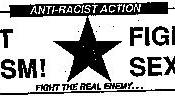South African writer Alex La Guma was an active member of his country's non-white liberation movement. One of the 156 people accused in the Treason Trial of 1956, La Guma wrote his first book, "A Walk in the Night and Other Stories", in 1962 (Wade 15). "The Lemon Orchard," a story which appeared in this debut work, is a gripping piece about the horror and cruelty of racism. In the story, La Guma describes in chilling detail how a black teacher (who had sought legal redress for being beaten up by his principal and church minister) is roused from his sleep and led to a lemon orchard by four white men for whipping. At the beginning of the story, the moon is "hidden behind long, high parallels of cloud" (La Guma 15). La Guma is apparently suggesting that the moon (representing Nature) does not wish to witness what will occur, since it hides itself behind clouds and shows its disapproval by refusing to cast its light on the men.
However, the story ends with Nature mirroring, even anticipating the violence that will happen. For instance, the trees have "angled branches" with "tips and edges" which "[gleam] with the quivering shine of scattered quicksilver" (19). In addition, the moon comes out "from behind the banks of cloud" (19). Words such as "angled branches", "tips and edges" as well as "gleamed" conjure up an image of shiny, metallic weapons (such as knives or arrows) associated with violence and death. The word "quivering" and the moon's emergence also suggest that Nature is waiting with bated breath for the impending beating. La Guma's depiction of Nature condoning the beating (since it mirrors and anticipates the imminent violence) raises interesting questions. For one, the ending is undoubtedly anti-climatic, since readers are led to expect a whipping which is not described. Given that La Guma has painstakingly built up readers' expectations of the looming violence, why does he conclude his story without narrating the black teacher's beating? In addition, Nature is described as having made a paradoxical U-turn from its initial position condemning racism. Given his anti-racist stance, La Guma evidently does not support whites beating up blacks. With his depiction of Nature supporting racism, La Guma risks confusing readers and weakening the anti-racism message he is presumably trying to send, since people may actually misinterpret him and think that he sanctions racism. Why then does he choose to portray Nature as condoning, even anticipating the violence to be meted out?
Understanding the reason for the story's incompleteness and Nature's perversion will allow readers to better comprehend the story and decipher the message that La Guma is trying to send (namely, the fact that racism should be condemned). In this paper, I will argue that there is no need for La Guma to describe the beating (hence the story's incompleteness) since he has produced a stable story, and because he wants readers to imagine the approaching violence themselves. Subsequently, I will explore La Guma's depiction of Nature and show that his portrayal of Nature's perversion contributes to the story's stability by reinforcing his message that racism should be condemned. Finally, I will look at Linda Hutcheon's treatment of discursive communities to demonstrate that there is no such thing as a truly stable story, and that even "The Lemon Orchard" may be misinterpreted by some discursive communities.
Exploring the Story's Stability
Booth argues in A Rhetoric of Irony that with stable irony, a "pattern of ironic interference has been established on a base which cannot be removed without removing the fun" (131). He elaborates by writing that there is a build-up of details which "strengthens the base from which the next inference, ironic or direct, will be made. To doubt any one of the plain assertions would throw into question everything we have enjoyed up to that point" (131). "The Lemon Orchard" is a stable story in that it leads readers inexorably to the conclusion that racism is vile and should be condemned. Despite La Guma's depiction of nature supporting racism, there is a "critical consensus" (Booth 105) among readers that "The Lemon Orchard" condemns rather than condones racism. La Guma produces this critical consensus (and consequent stability) by centering his arguments on almost-universal assumptions of what constitute right and wrong. For example, he makes the argument that we should not value a dog over a fellow human being (this is probably an almost-universal belief among most people - a human life is worth more than an animal's life), and because the racists treat the black teacher worse than a dog, he implies that racism should be condemned. Because of these arguments and assumptions (which I will discuss later), readers inevitably recognize "The Lemon Orchard" as anti-racist in nature, and agree with its message that racism should be condemned. The stability of the story means that there is no reason for La Guma to describe the beating (hence the story's incompleteness), since there is probably no way he can write about the horror of the beating better that what we can imagine for ourselves. In addition, the story's stability means that readers will still condemn racism even if La Guma does not narrate the brutal beating of the teacher. Through his use of contradictions (by contradiction, I mean something which is different from or in contrast with its usual state of affairs), his description of the physical setting, his portrayals of the white leader and the black teacher, his account of the vocabulary employed by the whites in denigrating the black, and his application of ironies, La Guma achieves stability in his story by operating on our shared assumptions of what is right and wrong.
At the beginning of the story, La Guma uses contradictions to signal that something is wrong. In doing so, he draws our attention to the fact that something unnatural is about to occur which goes against the grain of what makes us human. He is making an argument that since racism has caused this abnormality, it should be condemned. La Guma does this by describing clouds which hang "like suspended streamers of dirty cotton wool in the sky" (16). Since clouds are normally pure-white, a colour which symbolizes beauty and innocence, the fact that these clouds are dirty-white hint that the inner beauty of the soul has been soiled. La Guma also describes the "sharp, bitter-sweet citrus smell" of the lemons lingering "gently on the night air" (16). This juxtaposition of contrasting words (bitter with sweet and sharp against gently) creates a sense of uneasiness and tension. The sense of wrongness is further reinforced by the description of the physical setting. There is a wintry "chill in the air", and when the crickets become silent and the dog in the distance stops barking, we have a premonition that something unpleasant is going to happen. Through these contradictions and his description of the physical setting, La Guma implies that racism (which has brought about this unnatural state of affairs) should be condemned.
His portrayal of the white leader achieves a similar effect. The leader wears an old shooting jacket (conjuring up an image of a hunter) and has loaded his shotgun (La Guma 16), indicating that he is prepared to kill. In describing the leader as a hunter, La Guma not only brings out a sense of violence and murder but also suggests that the black teacher is treated like an animal to be hunted down. Moreover, the leader is shown to be walking at the rear of the party (16), indicating that the leader, instead of leading his men to a better future, is actually leading them backwards. La Guma is thus pointing out that with racism, civilization is regressing. In addition, when La Guma depicts the leader's face as being invisible (signifying anonymity) in the dark (16), he achieves two purposes. First, the story's vagueness may make it easier for readers to relate to it, since readers are left with a blank slate by which they can superimpose the visage of any person they particularly dislike over the leader's face. More crucially, the anonymity of the leader generates a sense of horror and danger, because we cannot identify the perpetrators behind the beating, and because this suggests that the leader can easily be somebody else administering the beating, thereby hinting that racism is widespread among whites. The leader is later described as having "eyes which [are] hard and blue like two frozen lakes" (18), suggesting that he is inhuman, cold and emotionless. When we consider that racists like the leader are devoid of humanity, this notion of facelessness indicating racism's widespread pervasiveness becomes disturbing, since it implies that large swathes of the white population hold racist views which have made them inhuman. The prevalence of racism is again illustrated when the lamplight reveals that the leader's face is "like the myriad lines which indicate rivers, streams, roads and railways on a map" (18), suggesting that the leader's view is representative of his country. Indeed, when La Guma discloses that the school principal and church minister - representing the educated elite who should know better than participate in the persecution of blacks - have beaten up the black teacher (19), readers will undoubtedly shudder at the prevalence of racism even among the top echelons of white society. We are even more disgusted than normal since a teacher is usually a person highly respected in society because of his role in educating the young.
La Guma's description of the black teacher also allows us to identify with and admire the suffering man. Consequently, we condemn racism because of the black teacher's treatment at the hands of the whites. When La Guma exposes the fact that the teacher is the "only one not warmly dressed", and reveals that he has not even been granted the time to tie his shoelaces after being taken from his home (17), we sympathize with the suffering teacher. Here, La Guma is building on our assumptions that it is wrong to bring someone out in the cold and wrong to break into his home in the middle of the night. When the black teacher refuses to answer the lantern-bearer's query of whether he is cold because "his fear [is] mixed with a stubbornness which [forbids] him to answer them" (17), we admire his quiet dignity and courage in the face of adversity. Our admiration for his courage grows as the story unfolds, when we see that the black teacher refrains from shivering in the cold "in case it should be mistaken for cowardice." The empathy we feel for the teacher's plight and our admiration for his courage lead us to castigate the whites' racist treatment of him.
Furthermore, the derogatory vocabulary employed by the whites in denigrating the black teacher creates a sense of revulsion. The use of extremely offensive words such as "verdomte hotnot" and "bushmen" (La Guma 17), "kaffir", "jong" , "donders" and "bastard" (La Guma 18), "bliksem" and "hottentot" (19), and the matter of fact tone in which all these are said, infuriate readers. The huge variation in the words used as the whites jeer at the black reveal that these whites have an extremely rich vocabulary when it comes to denigrating blacks, indicating that racism must be really widespread and pervasive (otherwise they would not have known so many different pejoratives). More importantly, the whites' casual tone of detachment and matter-of-factness communicates to readers that they find nothing wrong in using these repugnant terms, betraying their belief that it is perfectly acceptable to speak slightingly of blacks. Here, La Guma operates on our assumption that it is wrong to jeer at someone and call him "bastard" (or an even more offensive name). The varied vocabulary employed by the whites enrages readers who believe that no one deserves to be sneeringly disparaged.
The use of ironies also serves to strengthen La Guma's message that racism should be deplored. We realize that the real cowards are the whites and not the teacher since they are beating him up in the dark rather than in broad daylight presumably because they fear society's reaction (though it may also be argued that they are administering the beating in the dark as one way of intimidating the teacher). Montgomery et al. note that in dramatic irony, "a character on stage and involved in a dramatic action has a specific belief which the audience knows to be false" (164). There is dramatic irony when the leader threatens to "shoot a hole through [the black man's] spine" (La Guma 17) because he "[demands] respect from these donders" (18). Through this very act of threatening to shoot a bound, defenseless captive in the back (17), which is undeniably cowardly and reprehensible, the leader makes it clear that he is not in the least worthy of respect. The dramatic irony lies in the fact that he falsely believes he should be respected while readers know that he does not deserve respect. A second instance of dramatic irony occurs when the leader declares that it is an "amazing thing" for the teacher to "have taken the principal, and the meester of the church before the magistrate and demand payment for the hiding they gave him for being cheeky to them" (19). Here, the leader falsely believes that it is preposterous for the teacher to take people to court for beating him up, while we all know that there is nothing ridiculous in his justified action. After all, we will probably undertake the same action and ask for legal justice if we are placed in the black teacher's shoes and beaten up. This is likely what the leader will do as well. The leader's false belief that the teacher is not entitled to legal redress (when we know that everyone should be) is thus dramatically ironic. Two other cases of dramatic irony are more indirect. The first instance lies in the lantern-bearer offering the princely sum of five pounds to Meneer Maris for the watchdog Jagter (19). He goes on to say that he "would take great care of such a dog." This statement is dramatically ironic, revealing that the lantern-bearer probably treats a dog better than the black teacher, a fellow human being. The lantern-bearer's false belief that an animal is worth more than a person is definitely not shared by us. Here, La Guma again contributes to the stability of his message that racism is obnoxious by building on our assumption that it is wrong to value the life of an animal over a fellow human being. The last instance of dramatic irony occurs when the lantern-bearer leads the party to a gap in the orchard and remarks that "this is as good a place as any" for the beating to occur (19). The lantern-bearer is supposed to light the way to salvation and hope (since light is a symbol of enlightenment), however he leads the party to a place where violence will be done. This is dramatically ironic because the racists falsely believe that they are right in their treatment of the black teacher, while we know that their action and views are symbolically leading them down the path to hell and damnation. A further irony lies in the fact that there can hardly be anything "good" about a place which plays host to an evil event such as a lynching. Through these dramatic ironies, La Guma shows that the whites are real cowards, not worthy of respect, and should not be emulated since they treat a dog better than a fellow human being.
The black teacher's verbal irony achieves a matching effect by making us identify with him and share in his contempt of the whites. Montgomery et al. write that in verbal irony, the speaker states a proposition that he knows to be false and through "various signals" communicates his "attitude of disbelief towards the proposition" (165). They assert that with verbal irony, "someone incorrectly believes the proposition" and "someone else correctly disbelieves the proposition" (164). In addition, Wilson and Sperber remark that verbal irony "is a variety of echoic utterance, used to express the speaker's attitude to the opinion echoed" (265). They elaborate this statement by adding that "the speaker echoes a thought she attributes to someone else, while dissociating herself from it with anything from mild ridicule to savage scorn" (265). The black teacher's reply of "yes, baas" (La Guma 18) after being struck by one of the whites can be analyzed as a mocking echo of the white leader's demand for the black to answer him (17, 18). Here, the teacher makes the proposition that he is granting the leader the respect he wants in answering him. This proposition is correctly disbelieved by the teacher himself and the readers, since it is signaled to us that he is "speaking with a mixture of dignity and contempt" (18). Clearly, the teacher is caving in to the leader's demand to be answered not because he is granting him respect, but because he is "afraid that the leader [will] shoot him in anger and he [has] no wish to die" (18). In fact, he dissociates himself from his proposition through his contemptuous tone of voice (which makes it evident that he does not respect the whites). On the other hand, the whites incorrectly believe the teacher's proposition that he is granting them respect in answering, since they have "missed" the contempt embedded in the black's reply (18). In Irony's Edge, Linda Hutcheon observes that many theories of irony operate on the basis that those who are able to "get" the irony become initiated into a circle of knowing elite where they look down upon the people who fail to identify the irony (94). Our recognition of the black teacher's reply as being verbally ironic therefore allows us to identify with him in a shared sense of superiority where we join him in casting contempt on the racist whites (the uninitiated who fail to "get" the teacher's verbal irony) and their views.
In short, La Guma achieves stability in his story (in making his readers condemn racism) by building on our assumptions of what is right and what is wrong - it is wrong to wrong to treat a human being as an animal; wrong to beat up a teacher; wrong to bring him out in the cold; wrong to break into his home in the middle of the night; wrong to jeer at him in derogatory language; wrong to shoot a defenseless man in the back and wrong to value a dog over a fellow human being - thus sending an unequivocal message that racism should be condemned. The stability of the story in turn means that there is no reason for La Guma to describe the beating, since we can probably imagine the horror, injustice and cruelty of the beating better that what he can write. This is one possible reason for the story's incompleteness.
La Guma may also want readers to imagine the impending violence themselves. One possible effect of this is that readers become active participants who take part and are drawn into the story. Readers who are active participants will be even more horrified and disgusted by the beating when they imagine the looming violence themselves, since they are involved in the story at a deeper and more emotional level than mere onlookers. A deliberately incomplete story may thus reinforce the horror of racism (since readers are made to imagine the violence themselves).
Subsequently, I would like to make the point that most contradictions themselves involve some form of irony. In fact, Montgomery et al. state that one key signal which creates an awareness of irony "involves a contradiction between what the text tells us and what we already know" (165). In addition, Brooks broadly classifies irony as "the obvious warping of a statement by the context" (730). Taken in this light, most (if not all) of the narrative techniques employed by La Guma may come under the general heading of irony. While I may not have classified contradictions (or La Guma's other techniques) as being ironies or ironic per se, they may conceivably be thought of as such since some (if not all) of them do constitute a kind of warping of the text (in departing from the usual state of affairs or highlighting a sense of wrongness). Whether they are labeled as contradictions, metaphors or ironies (as Brooks would probably suggest), these tropes - in playing to our assumptions of what constitutes right and wrong - contribute to the story's stability by fulfilling their function of bolstering La Guma's anti-racism message. La Guma's description of Nature's perversion achieves the same purpose.
Exploring Nature's Perversion
At the beginning of the paper, I described how the moon (representing nature) initially condemned racism but later undergoes a perversion which renders it supportive of racism. Now I will examine how Nature's perversion, in mirroring and anticipating the impending violence, reinforces La Guma's anti-racism message and contributes to the story's stability. I will do this by discussing how Nature's perversion, besides showing racism's insidiousness and pervasiveness, creates a sense of horror and isolation which makes us condemn racism.
Towards the end of the story, Nature becomes perverted and starts mirroring and anticipating the looming violence. The following passage clearly illustrates this:
The blackness of the night crouched over the orchard and the leaves rustled with a harsh whispering that was inconsistent with the pleasant scent of the lemons. The chill in the air had increased, and far-off the creek-creek-creek of the crickets blended into solid strips of high-pitched sound. Then the moon came from behind the banks of cloud and its white light touched the leaves with wet silver, and the perfume of the lemons seemed to grow stronger, as if the juice was being crushed from them. (La Guma 19)
Every sentence in this passage is heavily laden with meaning. I shall discuss the more salient ones. "Blackness" suggests evil (this may actually be ironic, given that the protagonist is black), "crouched" brings up an image of a predator waiting to pounce on its prey, while "harsh" suggests brutality. Collectively, these words (and others such as "chill in the air") engineer a sense of menace, foreboding and violence. The rustling of leaves and the moon's emergence suggest that nature is anticipating the approaching violence, since the moon wants to watch the show and the rustling of leaves is akin to the noise spectators make as they settle into their seats just before a performance. The phrase "blended into solid strips of high-pitched sound" appears to be a foreshadowing of the whipping that will occur, conjuring up an image of the whip (or sjambok) cracking against the black teacher's back and tearing off strips of flesh, in the process eliciting screams of pain from him. Similarly, the crushing out of juice from lemons seems to be Nature's way of mirroring the explosion of blood from wounds as the teacher is flayed. Moreover, the contrast between the "harsh whispering" of the leaves and the "pleasant scent of the lemons" serves to highlight the internal conflict raging within Nature itself, one where the forces of darkness ultimately prevail since the lemons (with their pleasant scent) end up being crushed. All these symbolize the defilement of the physical setting and the perversion of Nature.
In addition, the gap in the orchard where the beating will occur is described as "a small amphitheatre surrounded by fragrant growth" (19). Since gladiatorial contests were held in amphitheatres (the most famous one is perhaps the Coliseum in Rome) in ancient times, the description of Nature as an amphitheatre suggests a throwback to earlier, more primitive times full of violence. Through the amphitheatre metaphor, La Guma sends us the message that racism is primitive, uncivilized and barbaric. He is hinting that the black teacher is more civilized than the whites, since he had sought legal redress while they have resorted to violence to solve matters (just like the uncivilized people in medieval times). Furthermore, because gladiatorial contests had an extremely high entertainment value which attracted huge crowds, we can infer that the audience in the amphitheatre (for example Nature) will enjoy the black teacher's whipping, which the whites will probably carry out with relish as a form of entertainment. Here, La Guma operates on our assumption that it is wrong (uncivilized, primitive, barbaric) to enjoy beating up people (or watching people being beaten up), reinforcing his message that racism should be condemned. The "fragrant growth" (19) surrounding the amphitheatre (a place of brutality and violence) serves as a contradiction which further highlights Nature's perversion.
The perversion of Nature shows that racism is so widespread and insidious that everything ends up being corrupted, since even Nature, which strongly condemned racism initially, ends up supporting it. The role of Nature's perversion in the story now becomes clear. For one, the vivid images employed by La Guma in describing Nature's perversion act as a way of describing vicariously the beating which will take place later. In addition, the deft deployment of the amphitheatre metaphor generates a sense of horror when readers realize that everyone seems to be tacitly approving (or out-rightly enjoying) the black teacher's beating. The fact that Nature (which should be impartial) has actually chosen sides against the black teacher is extremely significant. It suggests a frightening sense of isolation where the defenseless teacher is left all alone as the whites gang up on him, cheered on by Nature. La Guma may be intimating that no one wants to take up the cause of the blacks in real life, suggesting that society (as represented by Nature) actually participates in the persecution of blacks by being cheering onlookers if they turn a blind eye to racist activities. In a nutshell, La Guma is probably arguing that more needs to be done by society, saying that it is not enough for people to turn a blind eye to racism (like the moon which hides behind the clouds initially and refuses to see the reality) and pretend that it does not exist, and implying that if they do so, they are no different from active participants who implicitly cheer on the whites. He is thus making a passionate plea beseeching people to actively condemn racism to prevent its proliferation. Far from weakening his anti-racism message, La Guma's depiction of Nature's perversion (in its mirroring and anticipation of the impending violence) contributes to the story's stability by reinforcing his message that racism should be condemned.
Exploring Discursive Communities
While I have argued that the story is extremely stable, with La Guma sending an unequivocal message that racism is wrong and should be condemned, I would like to add an important warning caveat - there is probably no such thing as a truly stable story. In Irony's Edge, Linda Hutcheon defines discursive communities as "extended communities with shared customs and habits that form and are formed by cultural discourses" (92). She observes that the people who fail to "get" the irony "may simply 'misunderstand' (i.e. interpret it differently) because they are operating within a different discursive context" (95). Indeed, while the probability is low, I cannot entirely discount the fact that there may potentially be discursive communities that interpret "The Lemon Orchard" differently and think that La Guma, far from sending an anti-racist message, is actually a racist who supports whites beating up blacks (since he depicts nature supporting racism). These people may not agree that Nature's perversion paradoxically causes readers to condemn racism (through its very act of supporting it) if they operate in a different discursive community where they are unaware of La Guma's prominent involvement in his country's non-white liberation movement. Therefore, they may think that La Guma is actually insulting blacks in sprinkling his text with offensive words such as "kaffir" (La Guma 18) or "hottentot" (19). Instead of searching for a deeper meaning embedded in the story, these people will probably take La Guma's depiction of Nature's perversion as a straightforward statement supporting racism and conclude that "The Lemon Orchard" is racist. There may also be discursive communities (such as young children) who fail to realize the significance of terms such as "kaffir" (18) or "hottentot" (19). Young children may lack the knowledge or maturity which allows them to identify the story as being ironic and condemning racism. While they probably know that the meaning of a "hiding" (19) is a beating, and agree that it is wrong for the whites to beat up the black teacher, they may not be able to make the mental leap or connection which helps them realize that the story condemns racism (since they may not even have a concept of racism in the first place).
Whether a story is stable depends largely on the degree to which it deals with human assumptions and values which are almost-universal in nature. The larger the number of people who share these assumptions, the larger the discursive community and therefore the more the number of people who "get" the story's message (and the greater the story's stability). For example, a huge number of people don't believe in valuing a dog over a fellow human being, hence the story is largely stable. However, the fact that these assumptions are near-universal instead of truly universal means that "The Lemon Orchard" can never be perfectly stable, since there will always be people who see things in a different light. Nevertheless, given that in writing the story, La Guma probably presupposes discursive communities who share these almost-universal assumptions, know about his political history, and are able to understand the meaning of derogatory terms such as "kaffir" (18); then the story is successful and stable to the extent that any discursive communities with these shared assumptions, values and knowledge will understand that the story condemns racism. To these groups of people (readers like us), it will be extremely evident that the butt or target of the story is racism, racists, and society's tacit approval of whites' persecution of blacks in South Africa.
In conclusion, one important function of irony (and other devices such as contradictions) in "The Lemon Orchard" is its role in building up the story's stability and reinforcing the message that racism is bad. While this paper argues that "The Lemon Orchard" is stable and suggests that the story is incomplete because La Guma wants readers to imagine the impending violence themselves, and because there is no need for him to describe the beating, it is nevertheless important to realize that the story cannot be entirely stable since there will always be discursive communities that may in principle misinterpret "The Lemon Orchard," thinking that it condones racism. In subsequent papers, scholars can perhaps explore the various ways different discursive communities understand not only "The Lemon Orchard," but also investigate this phenomenon in other apparently stable texts.





